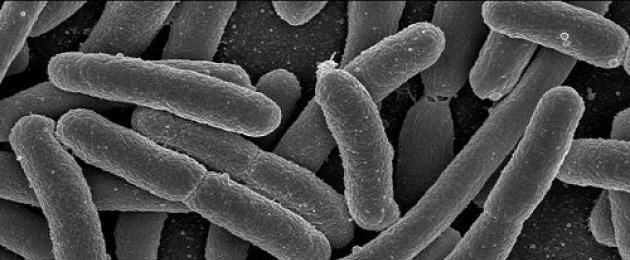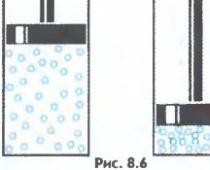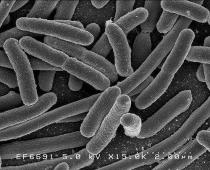The composition and distribution of the biosphere by mass is a rather interesting and significant issue in biology. Although an accurate census of all living organisms on Earth is literally impossible. It’s hard to imagine information like this: meet the bacteria Alice 43 by 10 to the 30th power, lives in a swamp near Ust-Kamenogorsk, sorry, while they were doing the census, Alice died, leaving 23 billion descendants. However, scientists were able to determine the biomass of the kingdoms of living organisms on the planet, as well as determine what influence humans had on its distribution. Although it’s too early to talk about super accuracy, the #infographics are very interesting.
results
Calculations were made in gigatons of carbon, because carbon compounds are the basis for all living things and make up about 17.5% of animals and plants, while this mass does not depend on the water content in them. 1 Gt C is equal to 10 to the 15th power of grams of carbon. According to scientists, the biomass of all kingdoms of life on the planet is 550 Gt of carbon. The lion's share of biomass is plants, about 450 Gt C, followed by bacteria 70 Gt C, fungi 12 Gt C, archaea 7 Gt C, protists 4 Gt C, animals 2 Gt C and viruses 0.2 Gt C.
Scientists also note that marine biomass, unlike terrestrial biomass, contains more consumers than producers. This refers to the food structure of the community, which is divided into consumers, producers and decomposers. Producers are organisms that create organic substances from inorganic ones, such as photosynthesis. Consumers consume the products of producers, but do not decompose them into inorganic substances, like decomposers. And decomposers are bacteria and fungi that decompose the remains of living beings into simple or inorganic substances. By the way, the error in counting bacteria in the results obtained is quite large.
It is also worth noting that, according to the data obtained, the underground biomass turned out to be less than aboveground, contrary to many statements of scientists. Which is understandable due to some gaps in our knowledge at the moment, especially in the underworld. But the mass of leaves is 6.5 times less than the entire mass of roots. Plant biomass includes ≈70% of tree stems and trunks, which are largely metabolically inert.
The following chart shows average data for the animal kingdom. Marine arthropods have the largest carbon mass with 1 Gt C, followed by fish with 0.7 Gt C, followed by mollusks, nematodes or roundworms and terrestrial arthropods with 0.2 Gt C each. Although terrestrial arthropods are significantly more represented in terms of species than marine ones their mass is 5 times less. Marine arthropods have individual species, such as arctic krill, whose mass is only 4 times less than all terrestrial arthropods. This type of krill can be put on a par with termites, whose mass is also 0.05 Gt C, slightly less than that of humans. Next come cnidarians - these are aquatic multicellular inhabitants that have stinging cells for hunting and protection; their mass is 0.1 Gt C. The same is the mass of all livestock on the planet, which consists mainly of cattle and pigs. But people occupy only 0.06 Gt C, which is almost two times less than livestock and 11.6 times less than fish. However, humans have 8.5 times more carbon mass than all wild mammals and 30 times more than wild birds. And domestic birds, among which chickens predominate, are 2.5 times more numerous than all wild birds.
The influence of humanity on the biosphere.
Distribution of biomass across environments and nutritional regimes for individual organisms.
General food chain, trophic levels.
Traditionally, all living organisms are divided into three domains (superkingdoms) and six kingdoms, but some sources may indicate a different classification system.
Organisms are placed into kingdoms based on similarities or shared characteristics. Some of the traits that are used to define a kingdom include: cell type, nutrient acquisition, and reproduction. The two main types of cells are and cells.
Common methods of obtaining nutrients include absorption and ingestion. Types of reproduction include and.
Below is a list of the six kingdoms of life and a brief description of the organisms that comprise them.
Kingdom of Archaea
Archaea growing in Morning Glory Lake in Yellowstone National Park produce vibrant color
Initially, these prokaryotes with one were considered bacteria. They are found in and have a unique type of ribosomal RNA. The composition of these organisms allows them to live in very challenging environments, including hot springs and hydrothermal vents.
- Domain: Archaea;
- Organisms: methanogens, halophiles, thermophiles, psychrophiles;
- Cell type: prokaryotic;
- Metabolism: depending on the type - metabolism may require oxygen, hydrogen, carbon dioxide, sulfur, sulfide;
- Method of nutrition: depending on the species - food consumption can be carried out by absorption, non-photosynthetic photophosphorylation or chemosynthesis;
- Reproduction: Asexual reproduction by binary fission, budding or fragmentation.
Note: in some cases, archaea are classified as belonging to the Kingdom of Bacteria, but most scientists classify them as a separate Kingdom. In fact, DNA and RNA data show that archaea and bacteria are so different that they cannot be combined into one Kingdom.
Kingdom Bacteria

Escherichia coli
These organisms are considered true bacteria and are classified under the domain of bacteria. Although most bacteria do not cause illness, some can cause serious illness. Under optimal conditions, they reproduce at an alarming rate. Most bacteria reproduce by binary fission.
- Domain: ;
- Organisms: bacteria, cyanobacteria (blue-green algae), actinobacteria;
- Cell type: prokaryotic;
- Metabolism: depending on the species - oxygen may be toxic, transportable or necessary for metabolism;
- Method of nutrition: depending on the type - food consumption can be carried out by absorption, photosynthesis or chemosynthesis;
- Reproduction: asexual.
Kingdom Protista

- Domain: Eukaryotes;
- Organisms: amoebas, green algae, brown algae, diatoms, euglena, slimy forms;
- Cell type: eukaryotic;
- Feeding mode: depending on the species - food consumption includes absorption, photosynthesis or ingestion;
- Reproduction: predominantly asexual. occurs in some species.
Kingdom Mushrooms

Includes both single-celled (yeast and mold) and multicellular (fungi) organisms. They are decomposers and obtain nutrients through absorption.
- Domain: Eukaryotes;
- Organisms: fungi, yeast, mold;
- Cell type: eukaryotic;
- Metabolism: Oxygen is necessary for metabolism;
- Nutrition method: absorption;
- Reproduction: sexual or asexual.
Plant Kingdom

They are extremely important for all life on Earth, since they release oxygen and provide other living organisms with shelter, food, etc. This diverse group contains vascular or avascular plants, flowering or non-flowering plants, and others.
- Domain: Eukaryotes;
- Organisms: mosses, angiosperms (flowering plants), gymnosperms, liverworts, ferns;
- Cell type: eukaryotic;
- Metabolism: Oxygen is necessary for metabolism;
- Nutrition method: photosynthesis;
- Reproduction: Organisms undergo alternating generations. The sexual phase (gametophyte) is replaced by the asexual phase (sporophyte).
Animal Kingdom

This Kingdom includes everyone. These multicellular eukaryotes depend on plants and other organisms for sustenance. Most animals live in aquatic environments and range from tiny tardigrades to extremely large blue whales.
- Domain: Eukaryotes;
- Organisms: mammals, amphibians, sponges, insects, worms;
- Cell type: eukaryotic;
- Metabolism: Oxygen is necessary for metabolism;
- Method of feeding: ingestion;
- Reproduction: Most animals reproduce sexually, but some animals reproduce asexually.
ANIMAL KINGDOM.
The main difference between an animal organism and a plant organism is that in animal cells there are no chloroplasts and no chlorophyll.
However, most animal and plant organisms have similar, i.e. identical life processes. For example, the breathing process. Almost all living organisms breathe oxygen while releasing carbon dioxide. The exception is some organisms, including a large group of anaerobic bacteria.
This releases the energy necessary for the existence of the organism. Actually, all living things are characterized by the process of metabolism. The body receives some things and throws others out.
the body in the process of respiration (carbon dioxide, water vapor, etc. are released), digestion (feces), sweat, urine. These are waste substances that are no longer needed by the body. In other words, metabolism occurs.
Metabolism is the main property of all life on Earth.
Oxygen, oxygen gives life to organisms -
In each cell, oxidation occurs in our
It’s like there’s a fire in a stove—the substances are boiling and bubbling.
And energy is released from us,
That’s why we walk, write and read, and hear everything.
After all, metabolism, of course, is the main property for us,
That’s why we live and breathe every moment and every hour.
MICROORGANISMS. Varieties, Ecological significance.
Microorganisms include very small organisms that can only be seen and examined under a microscope:
1.Eukaryotes are higher microorganisms (algae, fungi, protozoa). Their cells have a differentiated nucleus with a set of chromosomes, delimited from the cytoplasm by a nuclear membrane. The cytoplasm contains a developed endoplasmic reticulum, as well as mitochondria and ribosomes.
2. Prokaryotes - lower microorganisms (blue-green unicellular algae and bacteria). They do not have a differentiated nucleus; the DNA lies freely, immersed in the cytoplasm.
3. Viruses. Translated into Russian, the word virus means “poison”. The classification of viruses is based on the type of nucleic acid (DNA - viruses and RNA - viruses), the presence or absence of outer envelopes, as well as the number of capsomers in the capsid and the type of their folding (type of symmetry). Among them are a huge number of viruses that cause diseases in plants (tobacco mosaic disease), animals (mammal pox) and humans. The latter include adenoviruses (febrile diseases with symptoms of respiratory tract damage..), herpesviruses (herpes, chickenpox...), poxviruses (natural blackpox), myxoviruses (influenza, mumps, rubella).
BLUE-GREEN unicellular algae (a group of prokaryotic cyanobacteria)
They live primarily in water and are of great importance because they saturate the water with oxygen during the process of photosynthesis.
BACTERIA.
The average cell diameter is 1 micron, length varies from 0.1 to 10 microns. Bacteria have mastered a wide variety of habitats: they live in water, soil, dust, in the air, on the outer surfaces of plants and animals, including humans, as well as inside these organisms, often causing diseases. All bacteria are divided into 19 groups, which are of great importance for humans. There are bacteria that live with it and help it. Such symbionts include, for example, E. coli. She is the “mistress” of the large intestine (only the large intestine, no more). But among bacteria there are also those that cause diseases in both animals and humans (for example, anthrax...). Among the bacteria that cause diseases in humans are: spirochetes (syphilis), staphylococci, streptococci (pneumonia, sepsis), gonococci (gonorrhea), salmonella (typhoid fever, paratyphoid fever), shigella (dysentery), mycobacteria (tuberculosis), rickettsia ( typhus), chlamydia (trachoma) and others.
Based on morphology (external structure), bacteria are divided into three main groups:
rod-shaped (actually bacteria and bacilli);
spherical (staphylococci, streptococci, micrococci, diplococci, gonococci,
Tetracoccus, Sarcinus);
convoluted (vibrios, spirilla, spirochetes, leptospira).
Bacteria also play an important role in soil fertility.
They and other microorganisms, together with fungi, decompose and mineralize dead plant and animal remains, turning them into substances available for plant nutrition (humus). Without soil bacteria and fungi (true decomposers), annually falling leaves, pine needles, and animal remains would accumulate in huge quantities and prevent forest regeneration. This also applies to bodies of water.
This is the ecological significance of soil bacteria and other microorganisms. Their main function is to cleanse our common home.
On our planet there are many diverse and unique creatures that are very different from each other, and therefore different organisms have been assigned to different kingdoms. All living organisms, according to the type of nutrition, are divided into heterotrophs (they eat ready-made organic substances) and autotrophs (they themselves obtain organic matter from inorganic substances). The latter include plants and some types of bacteria, and the former include most bacteria, all animals and fungi. But despite some similarities, each kingdom has significant differences.
Representatives of the kingdom of bacteria
This is the most ancient group of living creatures. Bacteria can be found in all corners of the planet. They settled in the deepest depths of the oceans, in hot sulfur springs, in the crater of a volcano, in the cold ice of the Arctic, etc. All representatives of this kingdom are single-celled organisms. In terms of its structure, their cell has significant differences from the cells of other organisms. For example, the organelles of a bacterial cell include:
- cell wall,
- flagella,
- cytoplasm,
- nuclear matter.
The cell wall performs protective and supporting functions; flagella and villi serve as organs of movement. The cytoplasm has a very thick texture that contains nutrients. In the center of this cell there is an accumulation of nuclear substance, which contains hereditary information. These organisms are classified as prokaryotes because they do not have a nucleus. Under unfavorable conditions, bacteria form a spore in which they can remain for a very long time.
Representatives of the animal kingdom
Creatures that belong to this kingdom can have both a unicellular and multicellular structure. But the cell of any represented organism has its own distinctive features from cells of other kingdoms. It does not have a dense cell wall. It has no vacuoles. Glycogen accumulates as a reserve nutrient substance. And an animal cell has a cellular center.
kingdom of mushrooms
These organisms have characteristics of animals and plants. Their cell wall contains chitin, which stores glycogen. Some fungi may contain several nuclei in their cells. These organisms, like plants, are immobile.
The main characteristics of living things: SELF-RENEWALING, SELF-REPRODUCTION and SELF-REGULATION.
They define and basic properties of living things:
1) MATERIALITY;
2) STRUCTURED - living organisms have a complex structure;
3) METABOLISM - living organisms receive energy from the environment and use it to maintain their high orderliness;
4) MOVEMENT;
5) HEREDITARY and VARIABILITY - living organisms not only change, but also become more complex; and are also able to transmit to their descendants the information embedded in them, necessary for life, development and reproduction;
6) REPRODUCTION - all living things reproduce;
7) IRRITABILITY - the ability to respond to external irritations;
8) ONTO- and PHYLOGENESIS;
9) DISCRETE;
10) INTEGRITY.
Generalizing and somewhat simplifying what has been said about the specifics of living things, we can say that all living organisms eat, breathe, grow, reproduce and spread in nature, while inanimate bodies do not feed, do not breathe, do not grow and do not reproduce.
Kingdom of Viruses.
Their peculiarities : small size; lack of cellular structure; simple chemical composition; the impossibility of existing outside the host's body.
Form viruses: rod-shaped, filiform, spherical, cuboid, club-shaped.
Mature virus particles - virions- consist of two main components: DNA or RNA and protein.
Viruses are the causative agents of many plant and animal diseases. In past centuries, viral infections were epidemic in nature, covering vast territories.
For example, in Europe, 10-12 million people fell ill with smallpox and 1.5 million people died. Of particular note is measles. Today, more than 2 million children die from measles every year.
Viral diseases cause enormous damage to agriculture. The foot and mouth disease virus is very dangerous for animals. Appearance , the most probable hypothesis seems to be one that interprets viruses as a result of the degradation of cellular organisms. There is another opinion that viruses can be considered as groups of genes that have escaped the control of the cell genome.
Kingdom Bacteria .
Age The most ancient bacteria are at least 3-3.5 billion years old. Many bacteria, according to scientists, appeared relatively recently. They emerge from the ice of the Arctic and Antarctica, penetrate oil wells, live in the water of hot springs, the temperature of which reaches 92°C, abundantly inhabit all types of soils and water bodies, and rise with air currents to a height of 85 km.
Bacteria in Greek means rod. Bacteria were discovered by the Dutchman A. Leeuwenhoek in 1675, but only Louis Pasteur for the first time showed the role of bacteria in the process of fermentation and other transformations of substances in nature. There are 5,000 species of bacteria.
FEATURES OF THEIR STRUCTURE:
§ small dimensions (0.0001 mm);
§ a typical prokaryotic cell, there is no separate nucleus, mitochondria, plastids, Golgi complex, nucleolus, chromosomes, etc.;
§ special structure and composition of membrane structures and cell walls;
§ The shape of the cells can be spherical, rod-shaped and convoluted.
Among bacteria, according to the source of energy used, they are distinguished PHOTOTROPHES and CHEMOTROPHS.
Photosynthetic bacteria use light energy to synthesize organic substances. Chemosynthetic bacteria use energy released during the oxidation of any inorganic substances in the environment to synthesize organic substances.
AUTOTROPHIC - capable of synthesizing organic substances of their body from inorganic compounds.
HETEROTROPHIC - unable to synthesize organic substances from inorganic ones, therefore they require the supply of ready-made organic substances from the outside in the form of food.
SAPROPHYTES are bacteria that settle on dead, remains of plants and animals.
Kingdom of Mushrooms.
The kingdom of Mushrooms has 100,000 species, diverse in structure and lifestyle. Mushrooms is a separate group of cellular nuclear heterotrophic organisms that are similar to both animals and plants.
Signs of similarity between mushrooms and animals: the nature of metabolism associated with the formation of urea; heterotrophic type of nutrition; the content of chitin in the cell wall; the formation of a reserve product - glycogen.
Signs of similarity between mushrooms and plants: nutrition by absorption; unlimited growth; presence of a cell wall in cells; reproduction with spores.
STRUCTURE OF MUSHROOMS
The body of the mushroom consists of special intertwining threads - hyphae (mycelium). The cap mushroom consists of a mycelium and a fruiting body. And the fruit part is made from a cap and a stump.
A characteristic feature of fungi is their heterotrophy : some fungi settle on the dead remains of plants and animals; some feed on living things; some enter into symbiosis with plants.
Reproduce fungi asexually and sexually. Asexual reproduction is carried out vegetatively and by spores. The forms of sexual reproduction in fungi are varied and are divided into three groups: gametogamy, gametangiogamy, and somatogamy.
ROLE OF MUSHROOMS. Fungi are the main group of decomposers in ecosystems. They participate in soil formation, act as orderlies, and serve as food and medicine for animals.
- In contact with 0
- Google+ 0
- OK 0
- Facebook 0








